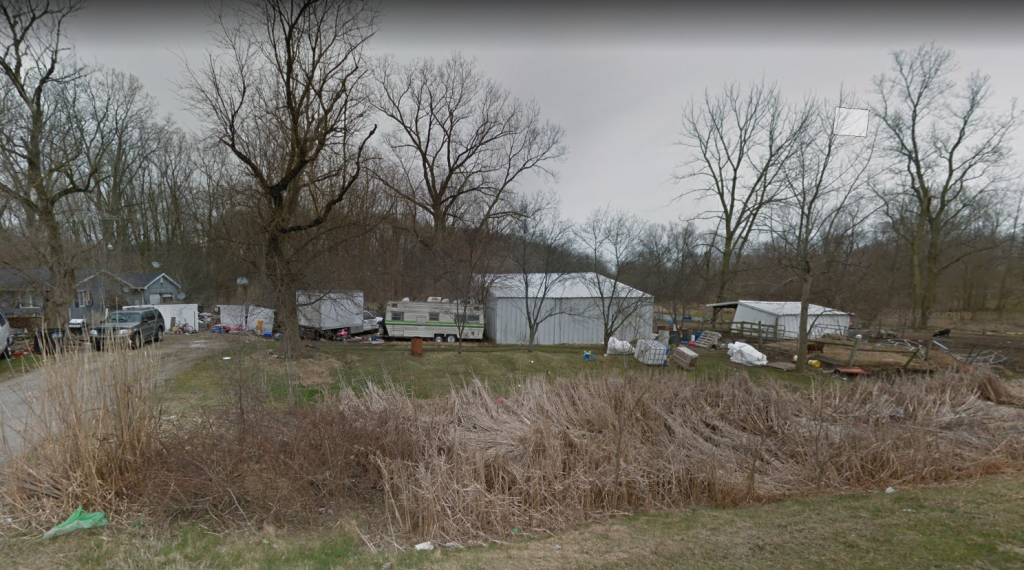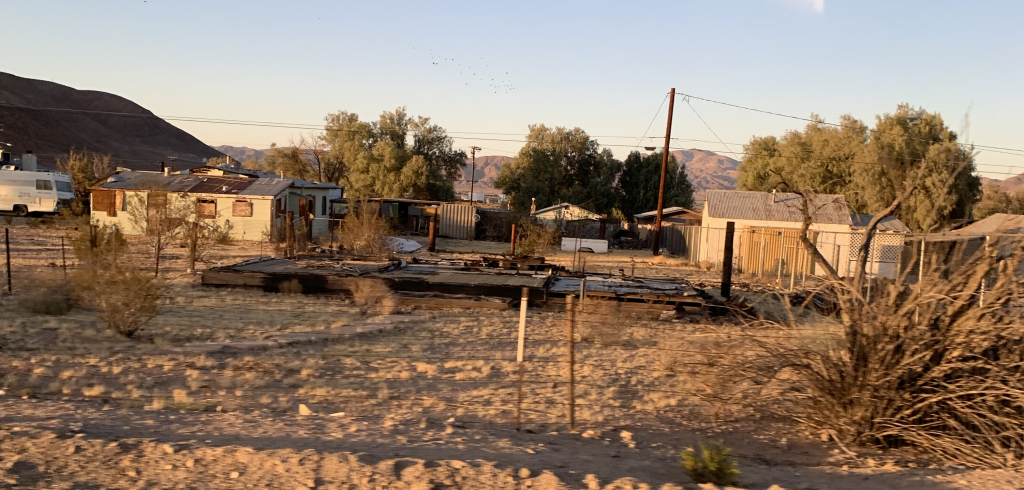
The scenes were horrific. Watching the mob swarm and desecrate the U. S. Capitol, I sat mesmerized. I did not want to believe what I was seeing. I was enraged by images of hate being paraded, the Klan, Nazis, militia wannabes, Holocaust deniers, and particularly seeing the ultimate symbol of treason, the Confederate battle flag. I was dumbfounded by the lack of preparation for this attack. It seems obvious the mob had complicit help from those who are entrusted with protecting the building and all of us?
While what I saw was horrifying, I was not surprised. My use of the term “flyover country” in the title was intentional. I recently read Sarah Kendzior’s incredibly insightful books Hiding in Plain Sight: The Invention of Donald Trump and the Erosion of America and The View From Flyover Country: Dispatches From the Forgotten America. More importantly, I was born and have lived in flyover country all my life.
I grew up in a north-central Indiana community of around 12,000 during the 1950s and 1960s. The town had three Black families, all of whom lived in my neighborhood. Racism was not displayed overtly. It was more subtle. There were no problems as long as they stayed in their place. They understood this very well.
The 1950s were boom years across my area of Indiana. The shortage of labor resulted in businesses seeking workers, especially low-paid workers from elsewhere. My town experienced a large influx of families seeking work from impoverished areas of Eastern Kentucky coal country. They were poor, white, and their view of the world fit with local beliefs and attitudes.
It is no mystery or surprise this area of Indiana possessed a rural outlook. Most of the population was one generation removed from the farm, very conservative in outlook and holding prejudices against anyone different. Jews, Catholics, and Blacks were at the top of the hate list, but it did not end there. The Mexican field workers who came every summer to pick tomatoes at area farms were referred to in several uncomplimentary ways. I grew up hearing every dog whistle and derogatory characterization imaginable in referring to or identifying them from relatives, friends, and neighbors.
After my older brother joined the United States Air Force and was investigated for a security clearance, we learned an uncle by marriage had been a member of the KKK. In the 1930s, the Klan was powerful in Indiana and controlled the state and the governorship.
I remember family political discussions centered around the Russians and the communist menace. My relatives and neighbors seemed to believe godless commies were everywhere, and we had to be vigilant. I heard them say the commies were meeting secretly at some rural location to plot their overthrow of our government. I overheard some of my relatives say that the barber who cut my hair was one of them, probably because he was a Democrat.
Why am I sharing this with you? Because what happened on January 6, 2021, has a past. It did not suddenly appear. We should pay close attention to the issues, pain, and frustration that lead them to follow a demagogue and seek to undo an election, defile the Capitol, and overthrow our government.
As a city dweller, it is easy to overlook what is happening just outside our doors, beyond the sprawl of suburbs and the appearance of plentitude. Owning a lake cottage in rural Indiana for some time, I became reacquainted with the America that exists, hiding in plain sight. If more of us took time to see, we would be taken aback by what we discover a short distance from our backyards.
The counties in northern Indiana are known for their lakes and large Amish populations. It has also been home to some interesting religious groups. The fundamentalist evangelist Billy Sunday built and preached at a Tabernacle on Winona Lake by Warsaw, Indiana. Ultra-conservative Grace College occupies that space today. Evangelist and faith healer Hobart Freeman, a graduate Grace College and founder of the Faith Assembly, a cult that refused drugs and medications and met in a barn called the Glory Barn near North Webster, Indiana. Another cultish religious group, the Way International, was once headquartered in nearby Rome City. These Northern Indiana counties were at the center of the Meth Lab culture. It was and is a hotbed for the Tea Party movement. Extreme conservative religious and political beliefs are two of the region’s identifying characteristics.
This is the heart of Trump country. He won this area of the state by 30-40 percentage points in 2016, and it was pretty much the same in 2020. The reasons are all too evident. Take a trip down backcountry roads where a reality you do not see on the evening news is revealed. I was shocked and mortified witnessing the deteriorating conditions of lives. The squalor and poverty are evident. It continues to grow like cancer spreading and infecting everything in its path. The desperation is apparent and visible from pickup trucks sporting twin flags of either an American flag and a Trump 2020 banner or an American flag flanked by the Confederate one. I saw levels of poverty I had not seen since my youth visiting my father in South Central Kentucky, in the early 1960s. Here you see society literally decaying and disintegrating from the inside out. It exposes what has taken place all over the U.S. as jobs left followed by the slow strangulation of services that support lives.
One thing that captured my attention exploring these communities was their jails. The County courthouse was always the dominant structure. It was the largest building in town, usually dominating the main square in every county seat. Today things have changed. The prominence of the courthouse has been replaced the county jail. It seems every county has a big, new jail and Sheriff Department headquarters. You cannot help but feel we have our priorities confused and headed in the wrong direction.
Another insight I have taken away from these explorations into rural Indiana is disconcerting. For one, people are warm, friendly, and helpful. Life here is at a slower pace. The stars are visible in the night sky. They relish viewing the beauty of a sunrise or sunset. Conversely, many suffer from ignorance, prejudice, narrow-mindedness, religious fundamentalism, and bigotry. Their behavior reveals an underlying fear and distrust for people of color or of another ethnicity. Their form of conservatism incorporates extreme intolerance. Whipped up, they are capable of committing the most terrible and horrific acts against those who dare to be at variance or antithetical. This is the reality in this part of the heartland. This is the danger we face as we meet the future.
My wife was confronted and threatened by a farmer after she stopped on a county road to take a picture of a country scene that caught her attention. The farmer came out of his house and yelled at her not to take a picture of his property.
A couple years ago, I took the time to watch the corporate network news and log the location of the stories they aired. As time passed, what emerged was predictable. With rare exception, all the stories were from the coasts. The exceptions included a few scattered stories from Chicago, Denver, or elsewhere with importance or significance. Many of the stories were done in New York City or its immediate environs. It hints at the bias and blindness of corporate media and why Sarah Kendzior’s book, The View From Flyover Country, is so apt.
If the corporate media elite left their comfortable office towers and ventured inland, they might discover why the mob storming the Capitol was no surprise. Their anger and rage have been building for decades, fueled by both political parties’ abandonment of the working and rural poor. Their pain has been ignored. The millions who live in the so-called rust belt where industries vanished, jobs melted away, and vital and essential services dwindled, evaporated, and disappeared were forgotten and ignored.

In October 2019, I joined my sons in California to chase the Union Pacific Railroad’s restored “Big Boy” steam locomotive 4044. It came to Los Angeles as part of a system-wide excursion celebrating its restoration to service. We went out to the Yermo, California UP rail yard east of Barstow where it had stopped overnight on its journey. We ventured there to get close to this magnificent example of steam locomotion technology, but that is not all that attracted my attention. The road taking us to the locomotive took us down a desert highway through areas reminding me of a Mad Max movie set. We passed dilapidated homes sporting scrap sheet metal fences. The hulks of abandoned vehicles served as crude monuments or sculptures gracing barren yards. We stopped to eat at Peggy Sue’s famous 50s Diner for dinner before driving through Daggett, a town divided in two by the railroad. Half the homes seemed to be occupied, and the remainder appeared abandoned and deteriorating. This is the other America that has been and is being ignored. This is America where Donald Trump did very well. This is where the anger seethes and builds just below the surface, waiting to explode like a dormant volcano.
See also at: Jerrymlawson.medium.com